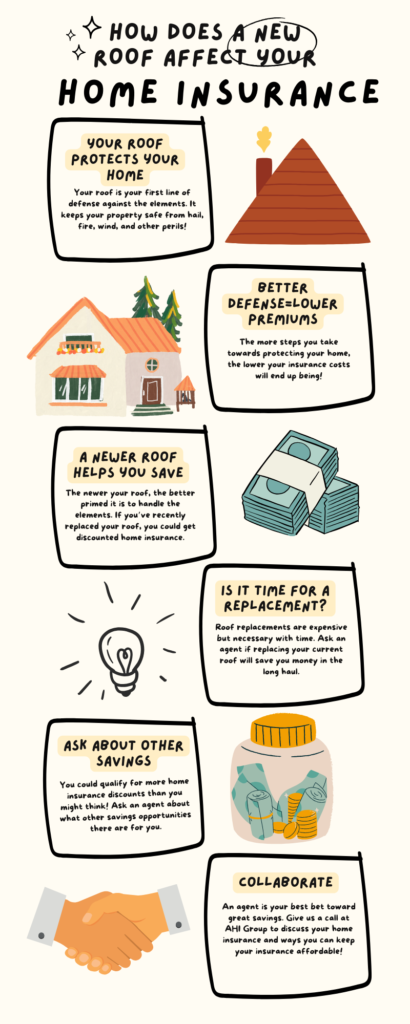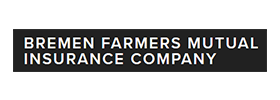A lot of your home’s features will influence the amount you’ll pay for your home insurance, from its location and ZIP code to when it was made and its construction materials. But did you know that, of these features, your roof is one of the biggest factors? After all, it’s the first line of defense against the elements.
The newer the roof, the better your insurance rates. But there’s more to it than that. Let’s get into it.
Why is roof age a factor in home insurance rates?
Simply put, a newer roof has a likelier chance to hold up against the elements and can have unforeseen issues that can cause deterioration and later snowball into worse problems. As it is with the same way with car insurance, the “safer” something is, the less you’re paying for your auto insurance. Since roofs can be the first line of defense that your home has against things like fire, wind, hail, and rain, they’ll be more important from an insurance perspective when it comes to preventing huge claim payouts.
Roofs 20 years and older may even need to be inspected before an insurance company will offer coverage. This typically means that they’ll send out a team of professionals to check out your property and assess your roof’s “readiness” to handle unexpected issues. Other insurance companies will agree to cover your roof’s actual cash value if it’s a bit older, meaning that they’ll only cover what it’s worth now minus depreciation. And some insurance companies? They’ll just refuse to cover homes with roofs 20+ altogether, as the risk that older roofs pose might just be too great.
Shape of roof
The shape of your roof can affect your costs just as much as the age, but the shape that will save you money is dependent on the environment where you live. If you live in an area that sees a lot of wind or even hurricanes, a hip-style roof is best.
Flat roofs overall are more expensive to insure since they collect water easier and can accumulate damage with time. They also have a shorter lifespan than other roof styles.
Roof materials
Your insurer will also take into account the type of roof material your home has, as some materials can withstand the impact of nature better than others. Some roof materials are also better in certain environments – for example, wood shingles may not be priced favorably in areas prone to fire.
Asphalt shingles are generally an all-around decent choice, as they are easy to install over top of existing roofs. They are, however, slightly more susceptible to decay.
Slate can be a good option for areas that frequently experience high winds and are relatively low maintenance. They are expensive to install and can be more susceptible to impact damage, like from hail. Their high replacement cost can also mean higher premiums.
Metal is another (increasingly more popular) option. It’s durable, fire-resistant, and reflects sunlight, but it also dents easily from impact and has a high replacement cost.
Wood shingles are not a great idea for areas prone to wildfire as some insurance companies will refuse to insure homes with wood shingle roofs, but they are more affordable. Some people always enjoy the cosmetic appeal of them. Yet, on average, wooden roofs cost about $100-$200/year more than any other roof material to insure each year due to their fire risk.
Will renovating my older roof lower my home insurance costs?

In theory, yes. Installing a new roof when your previous roof was 10–20+ years old can save you up to 35% on your homeowners insurance premiums, but discounts will vary depending on the type of roof that was installed (shape and materials). Some roofs are considered “impact-resistant” or have wind mitigation properties, which can qualify you for additional discounts.
Roof replacements themselves can be costly, however. Net savings are not guaranteed, and it’s wise to talk with your agent about how much you’d save by renovating your roof versus keeping the old roof and continuing with your current insurance rates.
Note as well that if you need a new roof due to a disaster, like an unexpected fire, and you replace your roof, it’s possible that your replacement could even increase your rates. This depends on the age and condition of your roof prior to the event.
Is roof replacement covered by my home insurance?
It depends on why your roof needs replacement. A typical replacement over lack of maintenance or because the roof has simply aged out won’t be covered by your home insurance, since home insurance is designed only for unexpected or sudden incidents. For example:
| What is covered by home insurance | What isn’t covered by home insurance |
| Falling objects, explosions, and other accidents | Poor maintenance |
| Nature damage, like fire, storms, hail, etc. | Non-functional repairs (cosmetic) |
| Roofs under 10 years old (full replacement) | Older roofs, usually 10 or 20+ years (*) |
*Note that while some companies just won’t cover homes with older roofs, some companies will only cover them for their ACV, and some companies will insure them but only once an inspection has been complete.
If your insurance company says you’ll qualify for a discount upon replacing your roof, that doesn’t mean your roof replacement will be covered. You will, however, get a discount upon doing so as a thank you for prioritizing the safety of your home.
Have further questions about roof replacement and your home? Have you recently renovated your roof in the last 10 years or so? Let us know! We’ll be happy to go over the benefits with you and may be able to help you find eligible discounts and other home insurance savings opportunities, which can save you hundreds of dollars on your insurance each year.























